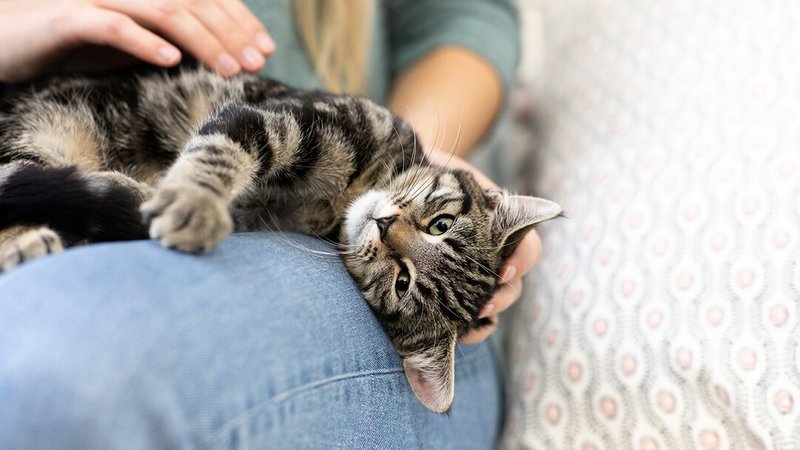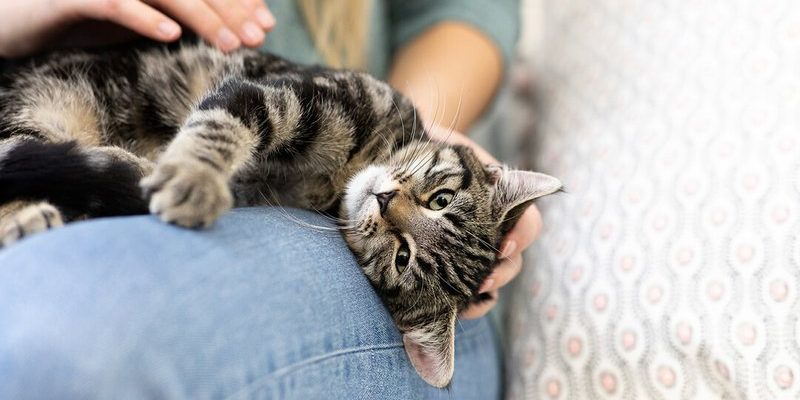
Imagine a cat as a living puzzle, where each behavior is a piece that, when fitted together, reveals their unique personality. Their actions can tell us a lot about how they feel and what they need. Understanding cat behavior not only strengthens our bond with them but also enhances their quality of life. Whether you’re a seasoned cat owner or thinking about adopting one soon, getting a grasp on their behaviors can really make a difference. Let’s dive into some of the most common behaviors you’ll see from our feline friends.
Purring: A Sound of Contentment
When your cat curls up beside you and starts to purr, it’s one of the most soothing sounds you can hear. But what’s really happening when those little vibrations come chugging along? While cats often purr when they’re content, it’s not the only reason they make this sound. Believe it or not, they also purr when they’re in pain or feeling stressed as a way to comfort themselves.
For instance, let’s say your cat has just come back from a visit to the vet. They may curl up on your lap and start to purr, signaling their need for comfort after a stressful experience. Or, during a cozy cat nap in a sunbeam, that gentle rumble is a sign of pure bliss. Cats may even purr when they’re hungry, hoping to entice you to dish out some treats! Understanding this can help you recognize when your kitty is feeling vulnerable versus when they’re just enjoying your company.
Scratching: Not Just for Fun
If you’ve ever come home to find your couch shredded, you know that scratching is a common cat behavior. But why do they do it? First off, scratching is a natural instinct for cats. It’s not just them being naughty; it serves essential purposes. For one, it helps them sharpen and maintain their claws. Just like how we might need a manicure every now and then, your cat needs to keep their claws in top shape.
Additionally, scratching is a way for cats to mark their territory. They have scent glands in their paws, so when they scratch a surface, they’re leaving behind a signature scent. It’s their way of saying, “This is my turf!” If you find your cat scratching the furniture, consider providing them with a scratching post. Offering alternatives can help redirect their behavior while keeping your home intact!
Kneading: A Cozy Throwback
Have you ever watched your cat knead a blanket, pillow, or even your lap? It looks adorable, but you might be wondering what it means. This behavior, often referred to as “making biscuits,” is rooted in kittenhood. Kittens knead their mothers to stimulate milk flow while nursing. So, when your adult cat kneads, it’s a throwback to their cozy days as a tiny furball.
Kneading can also be a sign of comfort and contentment. When your cat is all relaxed, kneading can be their way of saying they feel safe. Picture this: your cat hops onto your lap, kneads a soft blanket, and purrs. It’s a heartwarming scene that shows they trust you and feel at home. If they knead you specifically, consider it a compliment! They see you as their safe space.
Chasing and Pouncing: The Hunter Within
Even though your cat is a domestic pet, they still have that wild hunter instinct lurking underneath. You might notice them pouncing on a stray piece of string or darting after a feather toy. This behavior is a way of channeling their predatory skills and keeping themselves mentally stimulated. Think of it as their version of a workout!
When your cat gets into that playful mode, they might crouch, wiggle their behind, and then—boom!—they’re off in a burst of energy. Playing helps them stay fit and sharp. It also serves as an excellent way for indoor cats to express natural instincts that they might miss out on in the absence of hunting. Regular playtime not only helps keep your cat active but also strengthens your bond as you join in on the fun!
Grooming: The Importance of Self-Care
Cats are known for their meticulous grooming habits. A cat can spend up to 50% of its waking hours cleaning itself. This behavior isn’t just about looking good; it plays a critical role in their health. Grooming helps remove dirt, loose fur, and parasites, while also distributing natural oils that keep their coat healthy.
You might notice your cat over-grooming in stressful situations. This can be their way of coping with anxiety or discomfort. If you see your cat grooming excessively, it might be worth checking in with your vet to ensure they’re not feeling unwell. On a different note, when you groom your cat, it can be a bonding experience. Regular brushing not only keeps their coat clean but can also help them relax and enjoy your company.
Why Understanding Cat Behavior Matters
So, why should we even bother understanding these behaviors? Well, knowing what makes your cat tick can lead to a happier and healthier life for both of you. When you understand their needs and feelings, you can provide a supportive environment that encourages their natural instincts. This way, you help reduce stress and anxiety in your pet, leading to a more harmonious home.
Let’s be honest: being a cat owner can sometimes feel like deciphering a complex riddle. But once you start to learn about their quirks and behaviors, it becomes much easier to communicate with your furry friend. You’ll find that understanding their behavior may lead to a stronger bond, a happy cat, and peace of mind for you.
Final Thoughts: Enjoy the Journey with Your Cat
Understanding cat behavior is a journey filled with learning and surprises. By paying attention to their purring, scratching, kneading, and more, you’ll unlock insights into their world. Honestly, it’s a rewarding experience that can deepen your relationship with your cat.
Remember that every cat is unique, and behavior can vary from one feline friend to another. Take the time to observe, learn, and adapt to your cat’s needs. With patience and love, you’ll create a joyful environment for both you and your furry companion. So, the next time your cat purrs in your lap or scratches the furniture, you’ll know just what those behaviors mean!

